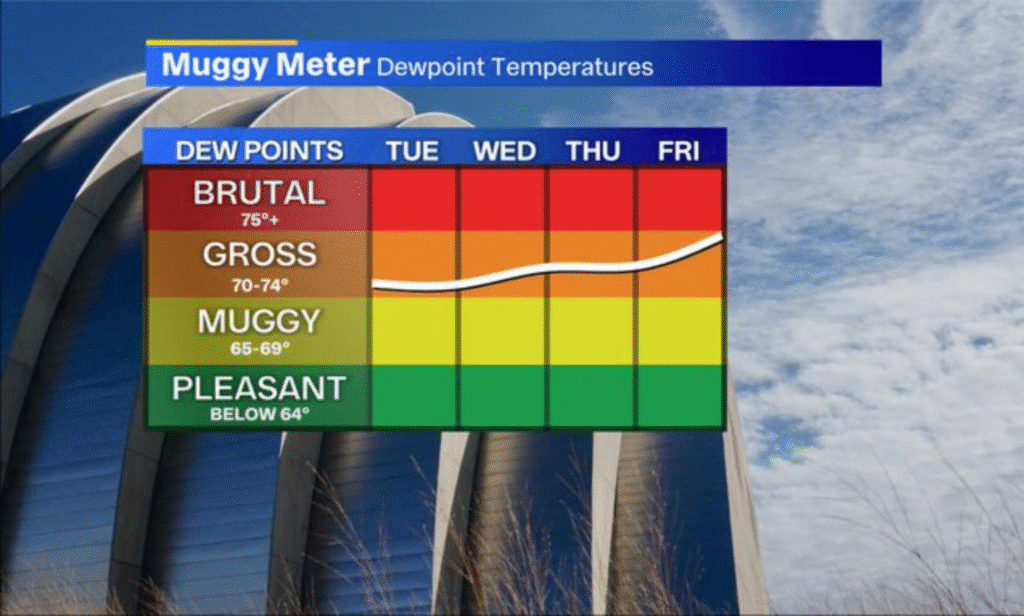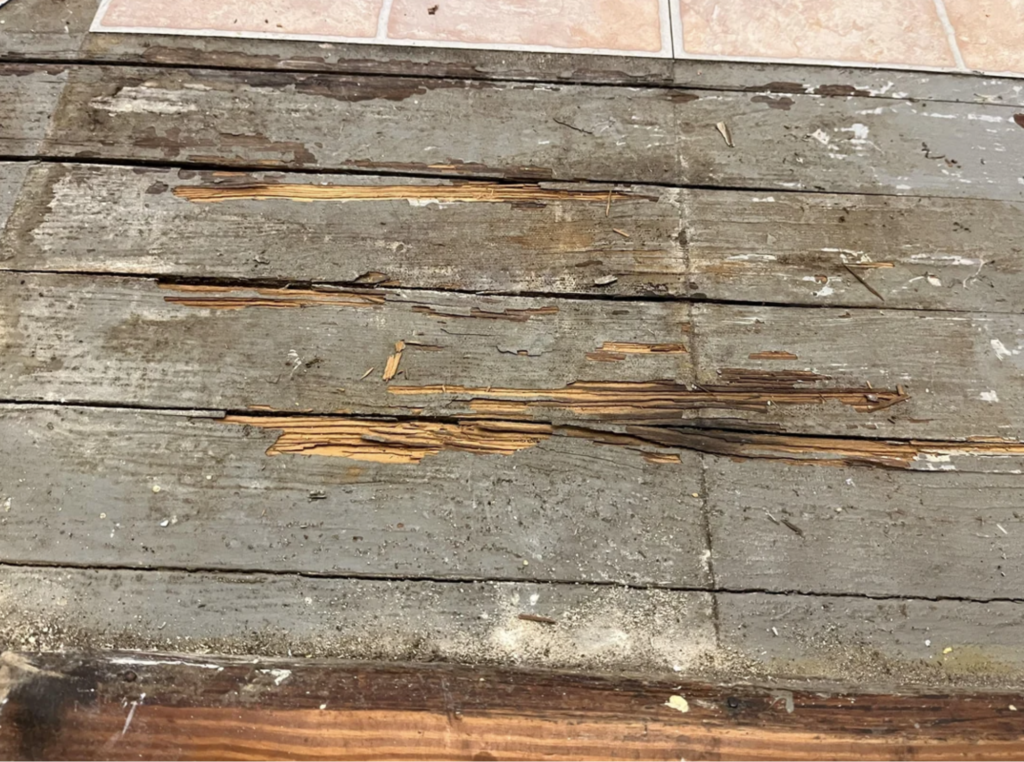Kansas City homeowners know how unpredictable Midwest weather can be. From sticky, humid summers to bone-dry winters, these swings in climate do more than affect your comfort—they can have a big impact on your hardwood floors.
Understanding how humidity levels change throughout the year—and how wood responds—is the first step to protecting your floors. Whether you already have hardwood or are thinking about installing it, here’s what you need to know.
Kansas City’s Humidity Patterns
Kansas City experiences a wide range of humidity year-round. According to climate data:
- Average humidity is 64% in January (the most humid month),
- Drops to 49% in July (the driest month),
- And varies around 55–60% most of the year.
While that may seem moderate, daily fluctuations and temperature swings compound the impact. Indoors, if you’re not using proper HVAC systems or humidification, those exterior changes can cause your wood floors to shift.
What Happens to Hardwood Floors in Humid vs Dry Conditions?
Wood is hygroscopic—it naturally absorbs and releases moisture depending on its environment. When humidity is high, wood expands. When it’s dry, wood contracts.
Here’s how that plays out:
☀️ In Summer: High Humidity = Expansion
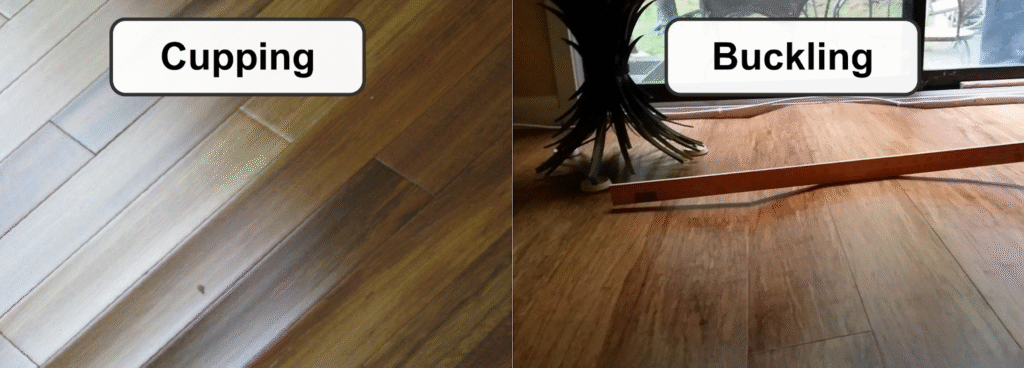
- Cupping: Edges of the planks rise higher than the center.
- Swelling: Planks press tightly together, possibly lifting.
- Buckling: In severe cases, the floor may lift off the subfloor.
❄️ In Winter: Low Humidity = Shrinkage
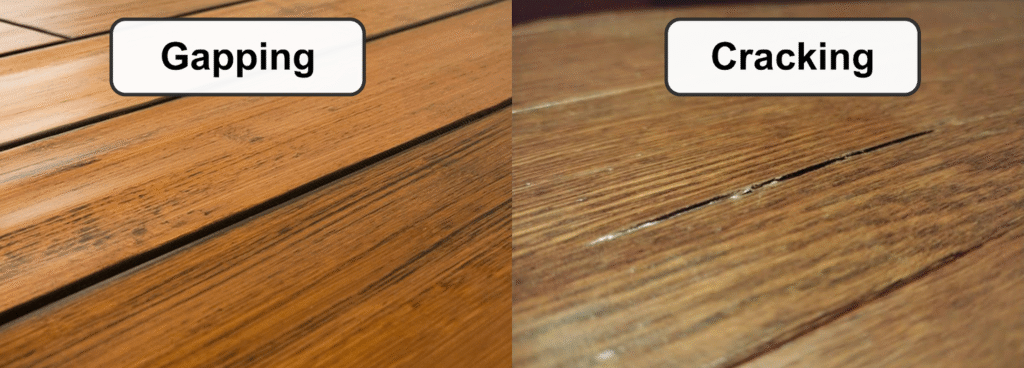
- Gapping: Thin spaces open between boards.
- Cracking: Extreme dryness can cause splits in the wood.
- Squeaking: Loose boards or gaps cause noisy floors underfoot.
Moisture Content: The Science Behind the Shifts
Hardwood is healthiest at a moisture content (MC) of around 6% to 9%, which aligns with indoor humidity levels of 30–50%. But when your home’s humidity climbs to 60%+ in the summer or drops below 30% in the winter, your flooring begins to respond—physically.
A typical 3-inch wide hardwood board can shrink or swell by as much as 1/8 inch across its width depending on seasonal changes. Over an entire room, that adds up fast.
Engineered hardwood is more dimensionally stable than solid hardwood because it’s layered with a plywood core. This makes it more resistant to seasonal shifts—especially helpful in Kansas City’s climate.
Kansas City Homeowner’s Hardwood Care Calendar
Here’s how to adjust your floor care throughout the year:
| Season | What to Expect | What to Do |
| Winter | Dry air, gapping, cracking | Run a humidifier, monitor humidity daily |
| Spring | Rising humidity, slow expansion | Begin using HVAC/dehumidifier as needed |
| Summer | High humidity, cupping risk | Use AC + dehumidifier to maintain 50% RH |
| Fall | Drying air, gaps may return | Prepare home with whole-house humidifier |
Choosing the Right Hardwood for Kansas City
| Flooring Type | Performance in Humidity | Recommended for KC? |
| Solid Hardwood | Moderate (moves with humidity) | ✅ Yes, with proper climate control |
| Engineered Hardwood | Excellent (very stable) | ✅✅ Good choice |
| Laminate | Poor (not real wood) | ❌ Not recommended |
| Vinyl Plank (LVP) | Excellent, but not wood | ✅ Good alt option |
Engineered wood flooring is great for Kansas City’s climate due to its moisture resistance and layered construction. LVT is incredibly popular and a great choice as well. If you prefer the look and feel of solid hardwood, just be sure your home maintains stable humidity year-round – With can, hardwoods can last more than a lifetime.
Acclimating Hardwood Flooring Before Installation

Before hardwood is installed—especially solid hardwood—it must be acclimated to the indoor environment. This usually means:
- Letting the flooring sit cross-stacked in the home for 7–10 days, in the room where it’ll be installed (not a non-climatized garage).
- Making sure the indoor temp is 60–80°F and humidity is 30–50% during this time.
- Measuring moisture content of both the flooring and subfloor to ensure compatibility.
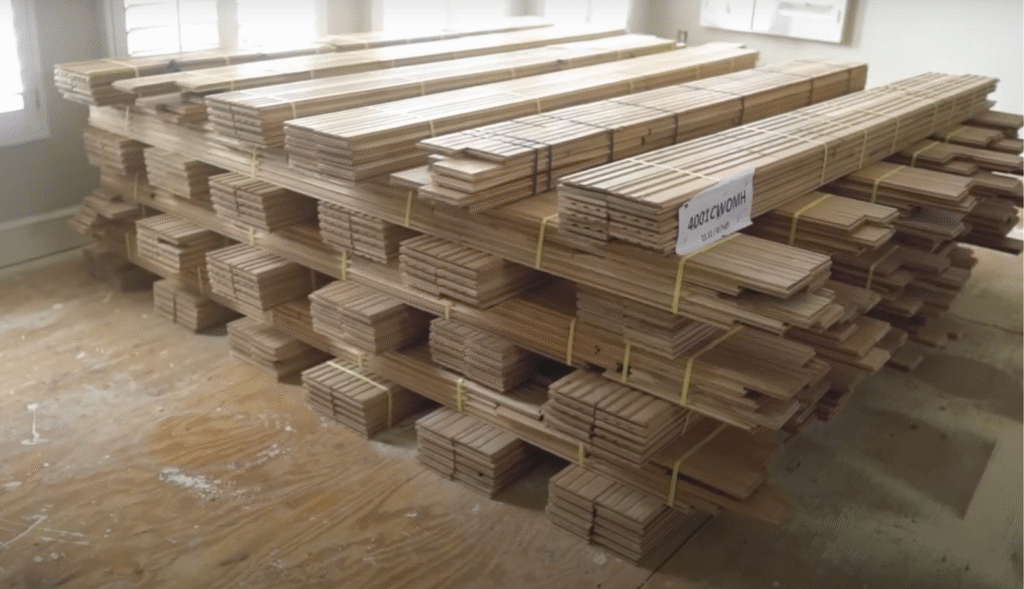
Skipping acclimation can lead to immediate problems: gapping, cupping, or worse.
Engineered hardwood may require less acclimation depending on the brand, but it’s always safest to follow the manufacturer’s instructions.
Year-Round Maintenance Tips for Humidity Control

Even the best flooring can suffer without routine care. Here are must-do maintenance tasks that protect your investment:
✔ Monitor Your Humidity
- Use a digital hygrometer to track indoor relative humidity.
- Aim to stay within the 30–50% range year-round.
- Avoid spikes or dips of more than 10% within short periods.
✔ Use the Right Tools
- Vacuum with a hard floor setting (no beater bar).
- Sweep or dust mop weekly to prevent buildup.
✔ Avoid Water and Steam
- Never use steam mops on hardwood—moisture will damage the finish and wood.
- Avoid vinegar or DIY cleaners that can strip protective coatings.
- Use pH-neutral wood floor cleaners recommended by your flooring installer.
✔ Add Felt Pads & Rugs
- Use felt pads under all furniture legs.
- Place breathable rugs at entry points to trap moisture and grit.
Professional Installation Matters
Humidity control starts with proper installation:
- Vapor barriers must be used when installing over concrete.
- Subfloors must be flat, dry, and properly tested for moisture.
- Expansion gaps around room edges allow for natural movement.
At Kimminau Wood Floors, our expert installation team follows NWFA best practices to ensure your floors are built to withstand Kansas City’s unique conditions.
Don’t Let Humidity Ruin Your Floors
Wood is a living, breathing material—and like us, it reacts to Kansas City’s ever-changing weather. But with the right flooring choice, climate control strategy, and routine care, you can keep your hardwood floors looking beautiful for decades.Have questions about your current floors or planning a new project?
Contact Kimminau Wood Floors today for expert guidance, trusted craftsmanship, and flooring built to thrive in Kansas City homes.

